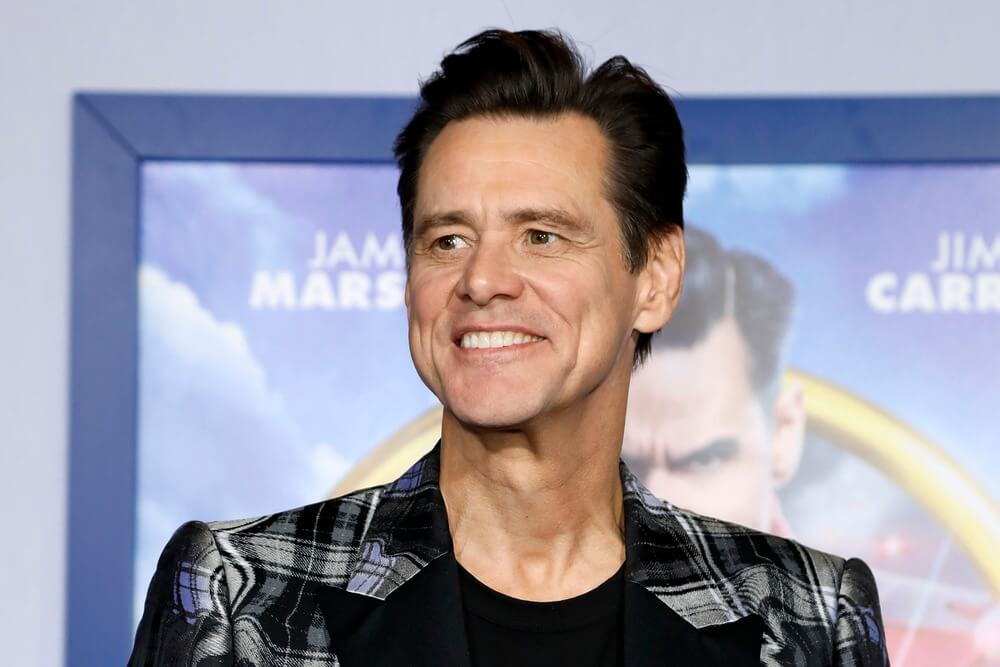
If you’re binge-watching Netflix and curious about titles described as “hilarious,” “very dark” and “sobering,” then check out the documentary that follows Jim Carrey during the making of the 1999 film Man on the Moon.
Jim & Andy: The Great Beyond tells the story of Carrey’s complete and unmitigated immersion into the character of Andy Kaufman during the shooting of the Andy Kaufman biopic, Man on the Moon. Long story short, this is your brain on method acting!
The documentary, directed by Chris Smith of American Movie fame and produced by Being John Malkovich director Spike Jonze, is a pastiche of behind-the-scenes footage, interviews, reflections and movie clips. It might seem a bit confusing, but under Smith’s steady yet chimerical direction, the film is surprisingly cogent.
However, what’s most intriguing is at the center of this drama: the suggestion that Jim Carrey may have lost his sense of self and his very identity while committing to his role in Man on the Moon.
For anyone who’s seen some of Carrey’s recent interviews and noticed his retreat from the business that appeared to be his lifeblood for so long, the premise is not at all far-fetched.
In a 2017 interview on the YouTube channel Steve Milne News, Carrey said, “There is no me, no self. Jim Carrey is gone–actually never existed–and I know that now.”
According to the Man on the Moon DVD commentary, Jim Carrey never showed up for work; rather, he showed up as either Andy Kaufman or Andy’s tiresome alter ego, Tony Clifton.
This level of commitment is in just about every one of his roles, but judging from the histrionics and mind-bending psychodramas in Jim & Andy, things seemed to have gone a bit too far with this particular project.
Carrey has been sitting on the behind-the-scenes footage for years and has always wanted people to see it.
Reflecting on his portrayal of Kaufman, he says, “It was definitely an important moment in the process where I found myself subjugating Jim Carrey for Andy Kaufman and Tony Clifton. And then at the end of it, looking for Jim Carrey again and having trouble finding him. And at a certain point, I realized, ‘Hey, wait a second. If it’s so easy to lose Jim Carrey, who the hell is Jim Carrey?’ And there was this Spielbergian kind of rack focus at that point where, like Roy Scheider on a beach, I was kind of watching from another place.”
Jim describes Jim and Andy as a “contemporary concept.” He likens his struggle with identity to people who suffer from depression. “People go like, ‘Oh, Jim’s been depressed.’ Well, yeah, I was depressed when I was trying to be the Wizard of Oz instead of being the sweaty guy behind the curtain. But now I know that Oz is a character. And I think everybody deals with that.”
For anyone who embarks upon the actor’s journey, this is both intriguing and troubling. Every actor’s goal is to “lose themselves” in any given character. But what if that means really losing yourself and becoming detached from your authentic self? If you have the good fortune of getting so tuned in to a character it’s hard to tell reality from fiction, how do you tune out of that character?
Want to get your acting career started? Sign up or login to Casting Frontier and start auditioning today!
You may also like:
- 7 Actresses Who Don’t Drink Alcohol
- Bill Skarsgard on the Intense Role of Pennywise in ‘It’
- 5 Guidelines for Improv
Written by Casting Frontier




